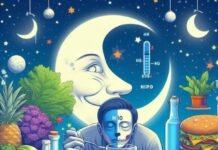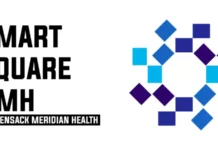These are the top 12 Hereditary Traits in a human being. Advances in science have allowed us to understand more about how genes contribute to medical conditions like hemophilia and Huntington’s disease. By looking at research from respected scientific journals, such as Nature Genetics and the Proceedings of the National Academy of Sciences (PNAS), we gain valuable insights into how genetics influence both physical and personality traits. Also, many of them are actually genetic traits. You will get to know more about them in the coming passages. Without further ado, let us jump right in.
Facial Expressions
A study in Israel from 2006 found that certain facial expressions, like concentration, sadness, and anger, can be inherited. They videotaped 21 people who were born blind and 30 of their relatives who could see. Moreover, they asked the participants to do challenging puzzles, listen to a gross story, talk about a sad or happy experience, and answer a funny question. The blind participants showed very similar facial expressions to their sighted relatives when they concentrated or felt angry and sad. Also, a computer program was able to correctly match blind participants with their relatives based on these expressions 80% of the time. This shows that some facial expressions can run in families.
Deviated Septum
The septum is like a wall inside your nose that separates it into two parts. Sometimes, it can get bent or crooked, which makes it hard to breathe. This usually happens if you get hit on the face. But, it can also be related to certain health conditions that affect the body’s connective tissue. These conditions, like Marfan syndrome and Ehlers-Danlos syndrome, are passed down through families because of genes. So, if you have trouble breathing through your nose, it might be because of a bent septum caused by a hit or related to a genetic condition. Also, now you know who to blame for your breathing issues.
Insomnia
A study by the Sleep Foundation found that insomnia, which is trouble sleeping, can be passed down in families through genes. Their research shows that your genes can give you up to a 58% chance of having sleep problems. This includes issues like how much sleep you need, sleep apnea, which is when you stop breathing briefly during sleep, and your body’s internal clock that affects when you feel sleepy or awake. So, if you have trouble sleeping or staying asleep, it might be related to your family’s genes, making it more likely for you to experience sleep difficulties. Also, insomnia is an extremely irritating condition. No doubt about it.
Widow’s Peak
A widow’s peak, which is a V-shaped hairline on the forehead, is a trait that you can inherit from your parents. Moreover, some medical conditions, like Aarskog-Scott Syndrome and Opitz Syndrome, are also linked to having a widow’s peak. Also, some studies suggest that a widow’s peak might be related to certain facial malformations called craniofacial clefts. However, we still don’t fully understand how much it affects the severity of these conditions. So, if you have a widow’s peak, it’s interesting to know that it can be passed down in families, and researchers are still learning more about its connections to certain medical conditions.

Caffeine Response
Caffeine affects people differently. Some feel alert and focused, while others get jittery and anxious. Furthermore, scientists have found evidence that these reactions might be influenced by our genes. Genes can directly affect how our bodies respond to caffeine in the short and long term. They can also impact our mental and physical processes related to caffeine’s effects. So, if you have different reactions to caffeine than others, it could be partly because of your genes. Researchers are learning more about this interesting connection between genetics and how caffeine affects us. Also, you can choose not to skimp on it now.
Sensitivity to Bitter Food
Around 25% of people have a gene called TAS2R38, which can make certain foods like leafy greens and hoppy beers taste bitter. Also, how bitter these foods taste can vary from person to person, depending on how well the compounds in the food bind to the gene. Furthermore, in a study with 93 Caucasian participants, they found that TAS2R38 was linked to a bitter taste when the tongue was swabbed with ethyl alcohol. This gene might explain why alcoholic drinks taste bitter to some people but not to others. So, our genes can affect how we experience the taste of certain foods and beverages.
Sneezing in the Sun
ACHOO syndrome, also known as Autosomal Dominant Compelling Helioopthalmic Outburst syndrome, makes a person sneeze when they’re suddenly exposed to bright light, like strong sunlight. Furthermore, the exact cause of this syndrome is not fully known, but researchers believe it is inherited as a dominant trait. This means if one parent has ACHOO syndrome, there’s a 50% chance their child will also have it. So, bright light can trigger sneezing in some people due to this inherited condition. Also, sneezing apparently has something to blame now.
Optimism
The OXTR gene makes a receptor for a hormone called oxytocin, which affects our body and mind. Some studies found that a part of this influences traits like optimism a lot. In a 2011 study, they discovered that people who inherited a specific variation of the OXTR gene from both parents tended to be more optimistic than those who got it from just one parent or not at all. So, our genes can play a role in how optimistic we are. Also, optimism is one of the most essential traits in the world. You need to boost it now and then. But if you can’t, now you know there are genes to blame.
Life Satisfaction
In 2012, scientists studied twins and discovered that genes can explain about 33% of the differences in life satisfaction among people.They initially linked a specific variation of the 5-HTT serotonin transporter gene to greater life satisfaction. However, when they attempted to confirm this in another group of people, they encountered difficulty obtaining the same results. This is pretty interesting. You can find more such facts if you dig around a little. Now you know why you have such satisfaction issues.
Chin Cleft
Have you seen a chin cleft? Of course you have. They are one of the most easily recognizable facial features in the world. Do you know they are also based on genes? Yes, it is true. A prominent cleft in the chin happens when the left and right sides of the jaw bone and muscle don’t fully join together. It creates a Y-shaped split in the chin. This feature is more noticeable in males than females. Also, a prominent chin cleft often looks much better in some faces. While on others, it may not be that suitable.
Bent Little Finger
Now this is one of the most quirky features we have seen. You can see a bent little finger in many people. Worry not, for this is not a physical deformity. It is very much a hereditary trait among those people. A dominant allele makes the last joint of the little finger bend inward towards the 4th finger. To check, lay both hands flat on a table and relax your muscles. Observe whether your little finger is bent or straight. If it bends inward, you likely have the dominant allele. If you have one of these, you can now show off the bent little finger. Also, now you know the list of hereditary traits is far longer than what we would expect. There are several, and most of them are not even impressive or fantastic.
Also read: The Specialty Of Chiropractic Care Is Its Holistic Approach To Treatment







































































